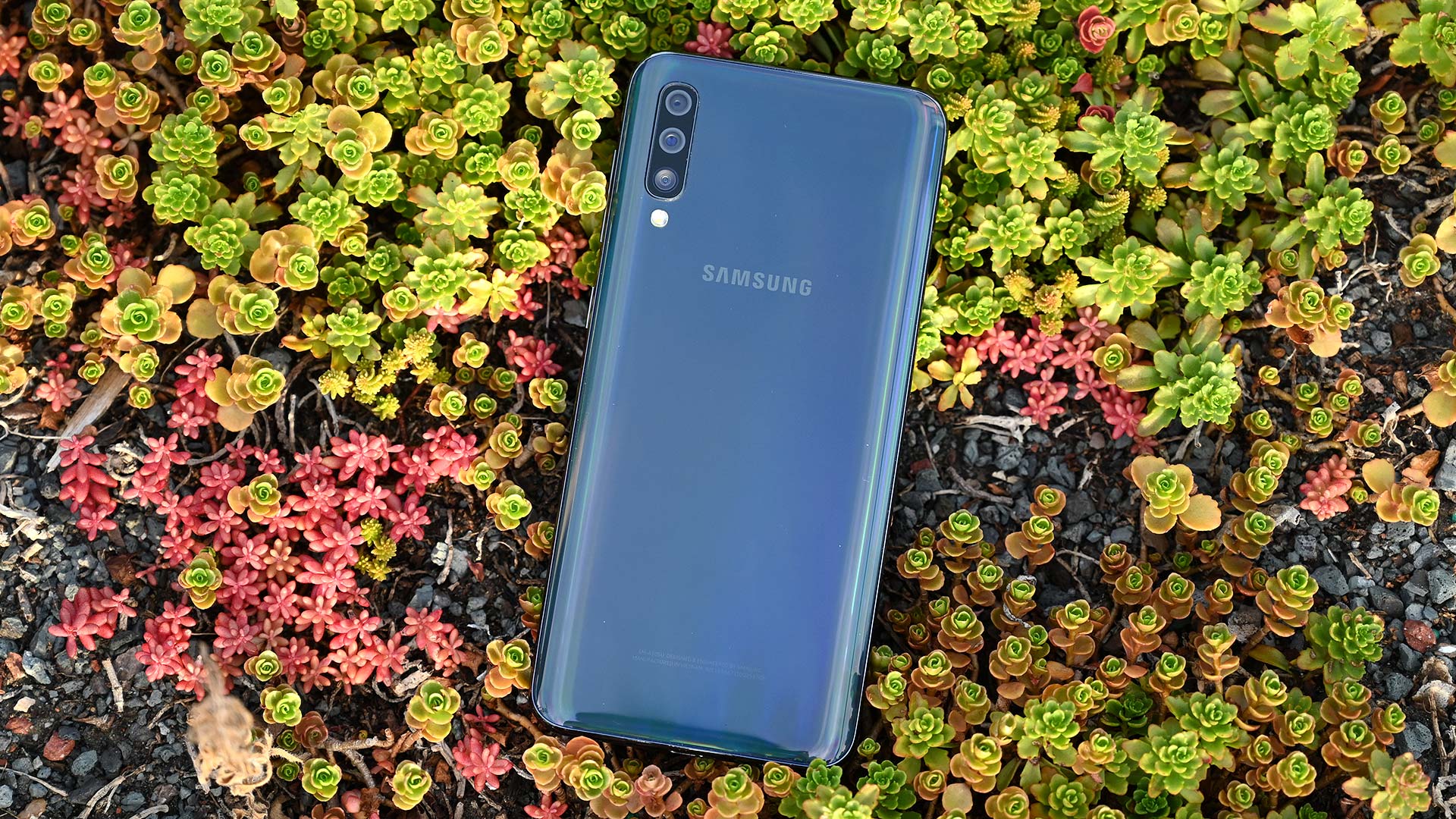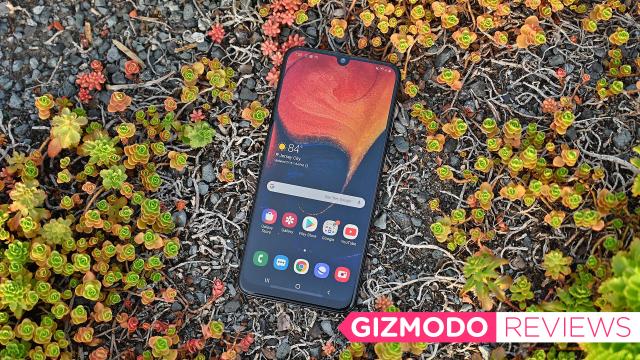At this point, everyone is at least aware of Samsung’s flagship Galaxy S phones like the Galaxy S10 and S10+, and its slightly less expensive sibling, the $1199 Galaxy S10e. However, as soon as you look beyond those for something even more affordable, Samsung’s portfolio gets messy real quick.
Between Samsung’s various budget and mid-range offerings, there are a dizzying number of phones that all kind of seem the same.

Galaxy A50
What is it?
A budget/mid-range phone from Samsung
Price
$499
Like
Big OLED screen, slim bezels, dual rear camera, microSD card slot, headphone jackas, great battery life
Don't Like
No stereo speakers or water-resistance, in-display fingerprint reader is finicky
With the Galaxy A50, Samsung is clearing out the clutter and going after some of the best budget and mid-range handsets on the market. With a retail price of $499, the Galaxy A50 slots neatly between the $399 Moto G7 and the $649 Pixel 3a. It also incorporates a couple of features the other two don’t have, like dual rear cameras and an in-display fingerprint reader.
From the outside, the Galaxy A50 looks quite similar to the Moto G7. Both phones have selfie cams that sit on a central notch that dips into their screens, big, mostly bezel-less displays, and smooth rounded backs.
However, when you look closer, you begin to notice that everything looks and feels a bit more polished on the Galaxy A50. The A50’s bezels are slimmer, its chin is smaller, and despite being practically the same size, Samsung crammed a 6.4-inch 2340 x 1080 OLED screen onto the Galaxy A50, while the Moto G7 has to make do with a 6.2-inch 2270 x 1080 LCD. So not only is the A50’s screen bigger, it’s brighter and more colourful too.
Both phones come with headphone jacks and microSD card slots for expandable storage. But in back, the A50 features a 25-MP primary camera, along with an 8-MP 123-degree wide-angle camera and a bonus 5-MP depth-sensing camera to help with portrait-style shots. That’s a nice improvement over the single cams found on pretty much every other phone in this price range. And while the A50’s back is plastic instead of glass like you get on the G7, Samsung officially calls that material “glasstic” (I’m not kidding), and it’s damn hard to tell the difference.
In terms of photography, the Galaxy A50 consistently topped the G7 too, thanks to generally better sharpness, colour saturation, and particularly, low-light performance. Really, in almost every way, the A50 is just a better device than the Moto G7.
However, when put up against the Pixel 3a, the Galaxy A50 falls short. Even though it has one less camera in back, the Pixel 3a’s photo quality is way better, producing shots with better details and clarity than any other phone in this price range.
Take, for example, a shot of some flowers taken by both phones (See the gallery below). While the A50’s shot is bright and vivid, its colour saturation overwhelms details like the wrinkles on the flowers’ petals. And in low-light, the Pixel 3a delivers better sensitivity, resulting in a brighter, more well-exposed pic. Because the A50 doesn’t have a dedicated night mode, turning on the Pixel 3a’s Night Sight makes the gap in image quality between the two phones even more extreme.
It’s a similar story for performance, where on benchmarks like WebXPRT 2015, Geekbench 4, and 3DMark, the A50 and Moto G7 turned in comparable results. On Geekbench 4, the Galaxy A50 (5536) edged out the Moto G7 (4624), which echoes real-world performance where the G7 suffers from more lag and UI stutter than the A50. The Pixel 3a is the smoothest of the bunch thanks to its Snapdragon 670 chip (versus the Exynos 9610 in the A50). It scores significantly better in 3DMark’s slingshot Unlimited test (the Pixel 3a hit 2581, which is 50 per cent higher than the A50’s score of 1682).
And when it comes to battery life, with a time of 12 hours and 17 minutes on our video rundown test, the Galaxy A50’s 4,000 mAh battery absolutely crushed the G7’s mark of 9:29. Meanwhile, the Pixel 3a fared just barely worse at 11:51, while the larger Pixel 3a XL was a tiny bit better with a time of 12:43.
This hierarchy even extends to features like the speaker (or speakers) on each phone, because while the Moto G7 and Galaxy A50 have mono speakers, the Pixel 3a offers true stereo sound. (Though I should point out that unlike the other two, the Pixel 3a doesn’t have an SD card slot.)
The A50’s only real issue is its in-display fingerprint sensor. I want to give Samsung credit for putting such a techy feature on a budget device, but in my experience, using it can be a bit hit or miss. Typically, it had no issue reading my digits, but occasionally, it took three or four taps to unlock the phone. And even after re-registering my prints multiple times, I couldn’t fix the issue.
The most important factor in determining which one of these devices to buy is price. The $499 Galaxy A50 is better in practically every way than the $399 Moto G7, but it costs $100 more. Then there’s the Pixel 3a. At $649, it’s more of a mid-range device. On the other hand, it has stereo speakers, superior performance, and the best camera of the lot.
With the Galaxy A50, it seems like Samsung is putting more effort into its affordable phones. With the price of modern flagship phones pushing $1000 or more, increased competition in the budget/mid-range segments is something celebrate.
README
-
No form of water-resistance is a bit of a bummer, and it is the one small advantage the G7 has over the Galaxy A50.
-
While the A50 has three cameras in back, only two of those are functional, as the third is reserved for depth sensing and portrait effects.
-
The Galaxy A50 is a solid budget phone and one of the cheaper ones on the market.
You can purchase the Galaxy A50 directly from Samsung, otherwise it’s stocked widely at phone stores and online.
